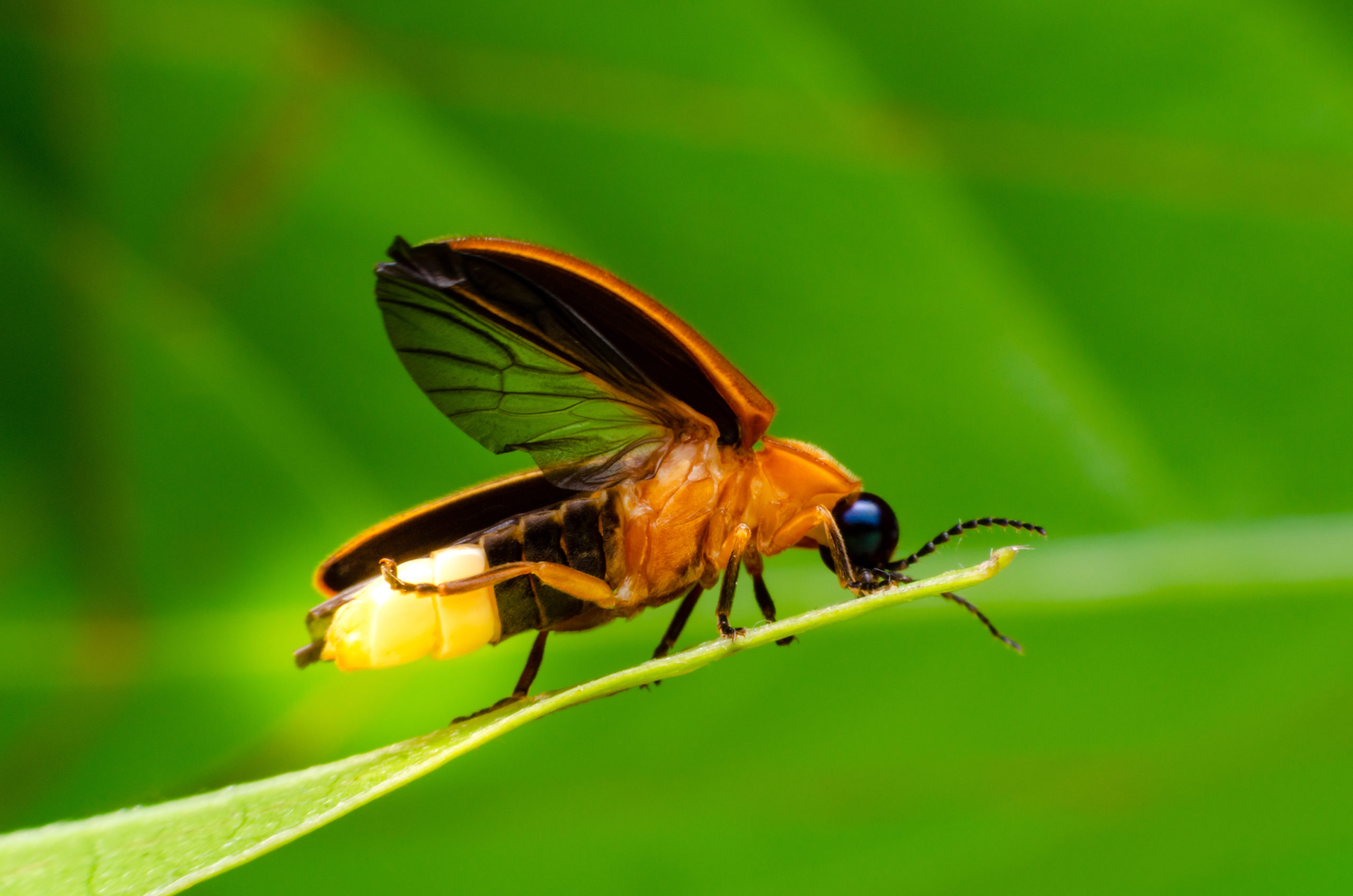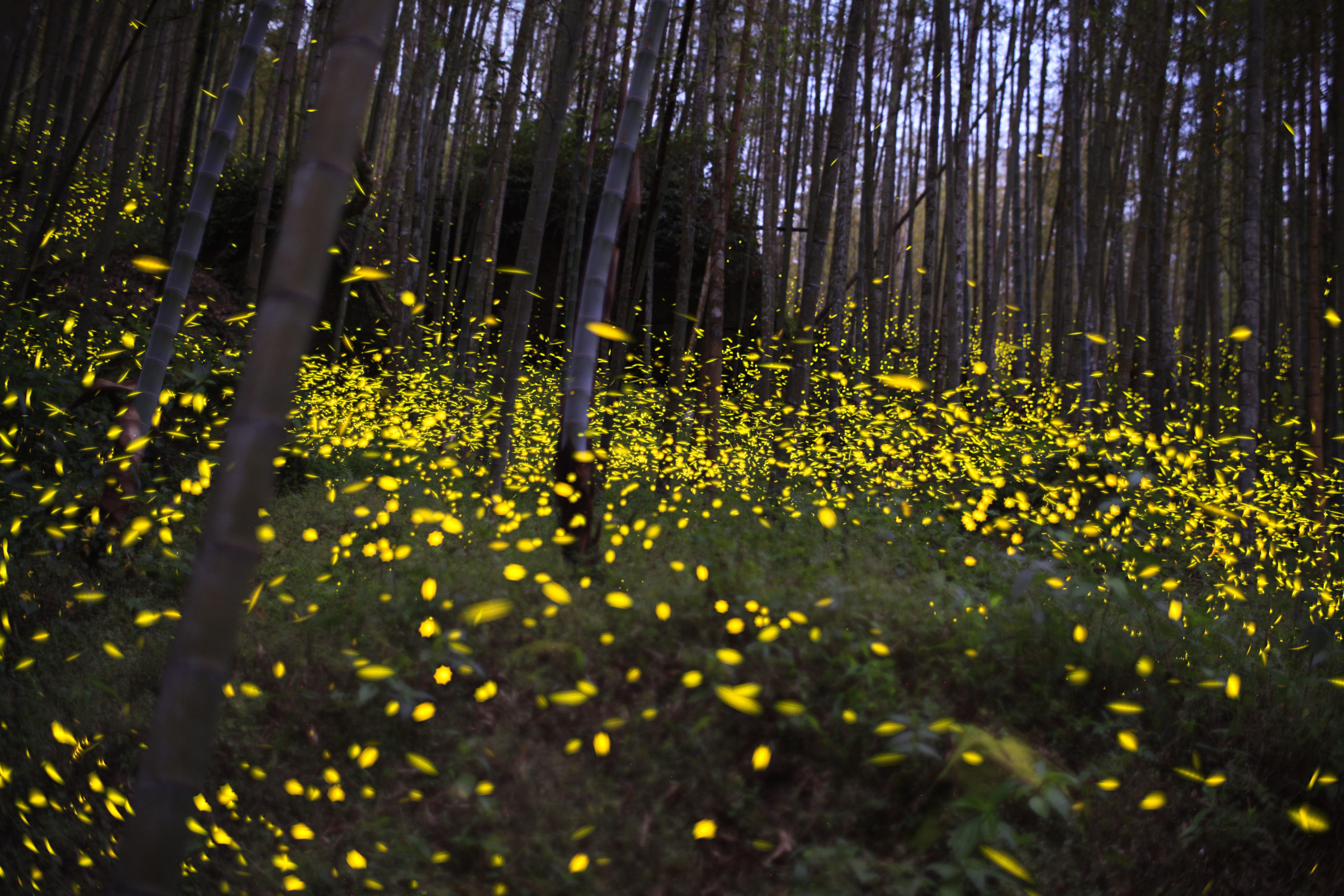The Shining Light of Fireflies
The Shining Light of Fireflies
Fireflies are wonderful yet question-inducing insects out there. Famous for their glowing bodies that light up to make a picturesque summer evening, fireflies lead interesting short lives that we don’t know much about without doing a bit of research. Let’s look at these strange creatures and learn more about them.
Life

Owl City’s famous song from 2009 that references fireflies may not be too far from the truth. They do seem to be part of their own dance troupe as they flit around our yards, flashing their natural lights and causing us to stop and watch. The larvae stage of fireflies actually lasts longer than the adults, as the larvae will live from one to two years before changing. Adult fireflies live just long enough to mate and lay eggs, and they can go their whole adult lives without eating most times.
Fireflies love warm and humid places, which is why they live mainly in tropical and temperate areas. They need moisture, so you won’t find them lighting up any deserts. Fireflies are frequently found near or in forests, marshes, fields, and rivers across America. They are nocturnal, which makes sense given their main visual trait. Interestingly enough, they are not flies; they are technically beetles. Fireflies also have a unique defense mechanism since they are so small and easily preyed upon. When bitten, they release small quantities of blood that taste extremely bitter to most creatures, including people. It is even poisonous to some animals and can have dangerous effects. So we won’t be seeing fireflies on any stadium or restaurant menus any time soon.
Diet

Speaking of menus, fireflies have a very small one that they choose from. It is interesting to note that fireflies are carnivorous, since you wouldn’t expect that from these tiny torches. The larvae stage is the one that eats the most, which is likely why the adults don’t partake as much due to their stored food. The larvae mainly eat snails and worms, since they have a chemical that allows them to disable their prey before indulging.
Since the larvae eat so much, the adults don’t have to eat really at all. If an adult firefly does eat, it is likely pollen or nectar. So certain species of fireflies can be considered pollinators! Other species actually eat other fireflies by attracting them with their flashing bodies, so some fireflies are not only carnivores, they are cannibals. But overall, the majority of adult fireflies eat nothing during their short life span that lasts a couple of weeks. For those short weeks, fireflies light up the night and give us reason to stop in admiration as we watch their luminous bodies gently flutter around the yard.
Lights

At this point, you are likely wondering: what about the lights? Why do fireflies seem to put on a special show, while other times, they are slowly blinking on and off? Fireflies are bioluminescent, meaning that they naturally produce light as living organisms. Many types of creatures have this ability, including some jellyfish and fungi. The light is very efficient and eco-friendly, since there is no heat emitted and it is basically 100% pure energy. The light produced by fireflies is created by a chemical reaction that takes place in the firefly’s abdomen. This light is used for both reproduction and communication. In some species, the light is used to attract mates, while in others it’s used as a warning sign to predators that the firefly is poisonous. Basically all of the fireflies living in the Western half of the U.S. cannot illuminate, so this is an Eastern trait.
There are a few different chemicals at work in this act. One is luciferase, which has been attempted to be recreated by humans many times over. This is the enzyme that tells the light to pour out, which is converted to energy by ATP. Luciferin is the compound that emits light under good conditions, and is resistant to heat. This is why fireflies can survive in warm places while keeping their lights in tact. Most species have male and female fireflies with the ability to illuminate, but some only have one gender with the ability. The larvae and eggs of fireflies can also produce light! Scientists have found that by tapping or vibrating the casings, the young insects will product light.
There are a few different reasons why fireflies light up the night. The main one is to attract mates. The typical mating ritual is all done with signaling by light. The male firefly will fly around, looking for a potential mate, while the female waits in hiding in case she doesn’t want to be with this particular firefly. When the male spots the female, he will flash his lights at her to show he is interested. If the female is also wanting to mate with him, she will flash back to him in the same pattern. This is the main use of their unusual talents, since it is so effective and key to their survival as a species.
But they can also use their lights in defense. Fireflies use certain light patterns to ward off predators and defend their homes. Any predator that still decides to eat them is on the losing end of the deal, since they will be either disgusted or poisoned by the blood that will release. So you could consider the fireflies to be pretty nice, warning larger animals about what’s in for them if they decide to ignore the aesthetically pleasing warning signs.
It’s Tough to be a Lightning Bug!

Fireflies are not a common pest that likes to annoy us and enter our homes, like ants or spiders. They prefer to be outside in the middle of nowhere, since they can enjoy the peaceful marshes and meadows without disturbance from larger creatures or lights that disrupt their own bioluminescence. Unfortunately for them, fireflies are not a very persevering insect. If the field that a certain group is living in is mowed down or ruined in any way, the fireflies will not migrate to a new place. They will slowly disappear from the area and essentially “die off,” at least for a time. But since fireflies can survive in many types of climates, we don’t have to worry about losing their shine anytime soon.
Even though fireflies aren’t common pests, they are often hunted by insects that like to annoy us as well. Larger flying insects who don’t know any better will look for a tasty meal, and quickly find out that they will not have that in a firefly. Our team knows the value of the ecosystem in every area and how to keep it thriving while keeping your home or business pest-free. Contact us at any time to learn more about how we can keep the pests away from your space without using harmful chemicals that harm you or your family. The beauty of insects like the firefly should be enjoyed at a distance, not in your home where you already have plenty of light.
Citations
EcoWatch. (2016, June 10). 12 fascinating facts about fireflies. Eco Watch. Available at https://www.ecowatch.com/12-fascinating-facts-about-fireflies-1891169972.html (Accessed on April 11, 2022).
Facts about fireflies. (n.d.). Firefly. Retrieved on April 11, 2022, from https://www.firefly.org/facts-about-fireflies.html
Fireflies. (n.d.). The National Wildlife Federation. Retrieved on April 11, 2022, from https://www.nwf.org/Educational-Resources/Wildlife-Guide/Invertebrates/Fireflies
Zielinski, S. (2012, June 27). 14 fun facts about fireflies. Smithsonian Magazine. Available at https://www.smithsonianmag.com/science-nature/14-fun-facts-about-fireflies-142999290/ (Accessed on April 11, 2022).

